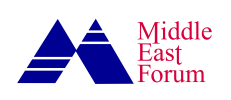Recently, the U.S. House of Representatives passed a resolution supporting Mujahedin-e Khalq of Iran (also known by its acronyms MKO, MEK, and NCRI). That the U.S. government, especially with Republican support, would back an Islamist-Marxist organization with a history of terrorism was not on anybody’s bingo card, especially since young Iranians see the group as favoring the status quo over reform in important ways.
Put aside the fact that the Mujahedin-e Khalq is the only political faction with a lower popularity inside Iran than the Islamic Republic itself. Despite the Islamic Republic’s many vices, it mobilized Iranians to fight against Saddam Hussein’s invasion when the Mujahedin-e Khalq joined Saddam’s military.
Among the younger generation who do not remember the war, the cleavage is cultural. In 2022, Iranians rose up over compulsory hijab. Young Iranian women and girls filmed themselves burning their hijabs and going out in public with their hair uncovered. The problem is that the Mujahedin-e Khalq leader Maryam Rajavi wears the hijab. To understand why Rajavi’s wearing a hijab is so problematic, Americans need to realize how the question of hijab differs in Iran and America.
The young generation bemoans that their country is culturally and politically backward, shackled by traditionalism and religion.
Americans see the hijab through the liberal lens of religious practice and tolerance. The Islamic Republic is not a liberal country, though. In a theocracy where religion and politics are intertwined, the hijab has become a political symbol. The young generation bemoans that their country is culturally and politically backward, shackled by traditionalism and religion, by misogyny and gender oppression. Youth see secularism as the remedy. They seek to do away with traditionalism and misogyny, symbolized by the turban and hijab.
The hijab, just like the turban, is an attachment to Iran’s Islamic, non-Iranian heritage from which the youth want freedom. It is the female subjugation to the turban. The hijab represents a choice, not simply of religion, but of what Iranians want their country to be like: a traditional nation or a Westernized one. The Iranian youth have chosen the latter. When the girls burn their headscarves, they are not merely rejecting the compulsory hijab; they are embracing modernity. It is not just the regime that they are protesting. They are also protesting older generations who disapprove of dating, not because they are religious, but because they are traditional and believe in arranged marriage. They are objecting to notions such as namus and ghayrah that give men control over women. Young Iranians are not only revolting against the state; they are challenging the Islamic norms that are incompatible with modernity.
A few months before the 2022 protest, Iranians took to Twitter to make the #No2Hijab hashtag trend. The young want the state that will succeed the Islamic Republic to embody change. They will not embrace a regime run by either a hijab-wearing woman or turban-donning man.
Rajavi is the hijab-wearing woman the youth now fight to prevent the hijacking of their future. She once supported Ayatollah Khomeini and the Islamic Revolution; they do not believe her embrace of hijab shows an evolution of thought.
While the Mujahedin-e Khalq and its shell groups in the United States and Europe portray the group as a feminist organization for having a female leader, young Iranians reject it for embodying the same sexist, backward practices that characterize the current regime.
The young want the state that will succeed the Islamic Republic to embody change.
The contrast between the popularities of secular opposition figures and Rajavi is also telling. Social media activities and polling among Iranians show that figures such as Masih Alinejad (best known for her activism against compulsory hijab), Nasrin Sotudeh, and Hollywood actress and activist Nazanin Boniadi are popular among young Iranians, and none of them covers her hair. The son of the late shah is also popular, as is his mother, the former empress. Neither she nor his wife and daughters wear hijab; rather, they dress like American and European women. What little support Rajavi has comes from older Iranians living outside Iran.
If Americans want to effect regime change in Iran, it is better that they rally behind someone who resembles a change that young Iranians envision, not promote someone who represents a return to the religious conservatism and oppression of decades past.







